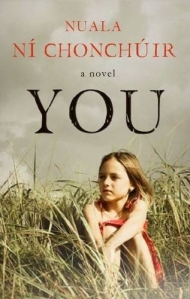Fiction – paperback; Picador; 342 pages; 2010.
Last year I read John Banville’s latest novel, April in Spain, a marvellous crime-inspired romp set in San Sebastian in the 1950s.
But while I recognised the connections with his Quirke Dublin series penned under his crime-writing pseudonym, Benjamin Black, and his magnificent locked room mystery Snow, I failed to see that it was basically a follow-up to his novel Elegy for April, published more than a decade ago.
I only discovered this fact when browsing in my local second-hand book warehouse and Elegy for April was staring at me on the shelves! So it came home with me (in exchange for $9.90) and I’ve spent the best part of the last week reading it and eking out the story for as long as possible because I was enjoying it so much.
A woman vanishes
Set in Dublin in the 1950s, this richly atmospheric tale focuses on the mysterious disappearance of a junior doctor, April Latimer, and explores what might have happened to her.
Was she murdered, or did she stage her own disappearance? And regardless of the scenario, what caused her to vanish? There’s no body to be found, no sign of struggle or foul play.
Her family — a stuck-up mother, a pretentious brother and an uncle who is a government minister — don’t seem to care, arguing that April had long chosen to disassociate herself from her family for personal reasons and she’s probably just gone off with a man or escaped for a holiday in the sun.
But her circle of friends are concerned because it is unlike April to not attend their drinking sessions and get-togethers without telling them first. Her friend Phoebe Griffin is so worried she asks her father, the pathologist Quirke, to help determine what might have happened.
Genre busting novel
This novel isn’t a police procedural, nor is it a traditional detective story. It’s Banville’s own take on crime but it’s by no means a conventional crime novel per se. The reader can’t even be sure that a crime has taken place. There’s certainly no neat resolution, with all the loose stories lines tied up at the end.
But Elegy for April is a wonderfully evocative read and what it lacks in plot it makes up for in characterisation. It is peopled with a cast of distinctly colourful characters, including the star of the show, Quirke, whose orphaned childhood and complex, and often strained, family relationships have shaped his outlook on life and which provide a rich back story for Banville to explore.
When the book opens, for instance, we discover that Quirke is just finishing a stint at St John of the Cross, a “refuge for addicts of all kinds”, because of his penchant for booze. Throughout the novel, he wrestles with his newfound sobriety, convincing himself that one or two drinks won’t hurt — often with disastrous, and occasionally, hilarious results.
And while he’s adjusting to life as a teetotaler, he’s also adjusting to life as a father, for when Quirke’s wife died in childbirth, he gave away his infant daughter to his sister-in-law and kept it secret from the child, Phoebe, who has only recently learned of the truth. The pair are trying out their newfound father-daughter relationship with tender but laboured efforts.
Portrait of 1950s Dublin
The story paints a vivid portrait of 1950s Dublin — the streets, the pubs, the landmarks — and society’s moral stance on such things as inter-racial relationships (was April Latimer, for instance, having relations with a black Nigerian man?), abortion and single women.
And while it’s a serious story about a potential murder, it’s also incredibly funny in places. Quirke, for instance, buys a car — a very expensive and rare Alvis TC108 Super Graber Coupe, “one of only three manufactured so far” (Wikipedia picture) — even though he does not know how to drive and doesn’t have a licence. His scenes behind the wheel are hilarious.
At the corner of Clare Street, a boy with a schoolbag on his back stepped off the pavement into the street. When he heard the blare of the horn he stopped in surprise and turned and watched with what seemed mild curiosity as the sleek black car bore down on him with its nose low to the ground and its tyres smoking and the two men gaping at him from behind the windscreen, one of them grimacing with the effort of braking and the other with a hand to his head. ‘God almighty, Quirke!’ Malachy cried, as Quirke wrenched the steering wheel violently to the right and back again.
Quirke looked in the mirror. The boy was still standing in the middle of the road, shouting something after them. ‘Yes,’ he said thoughtfully, ‘it wouldn’t do to run one of them down. They’re probably all counted in these parts.’
And as ever with a Banville novel, the prose is beautiful and dotted with highly original similies throughout.
Quirke, for instance, standing in his long black coat and black hat resembles a “blackened stump of a tree that had been blasted by lightning”; a stage actress with whom Quirke has a fling has vivid red lips “sharply curved and glistening, that looked as if a rare and exotic butterfly had settled on her mouth and clung there, twitching and throbbing”; while a secret between lovers that is never discussed but always remains between them is described as “like a light shining uncertainly afar in a dark wood”.
I thoroughly enjoyed Elegy for April and look forward to reading more in this Quirke series as soon as I can lay my hands on them.
 I read this book as part of Cathy’s #ReadingIrelandMonth2022. You can find out more about this annual blog event at Cathy’s blog 746 Books.
I read this book as part of Cathy’s #ReadingIrelandMonth2022. You can find out more about this annual blog event at Cathy’s blog 746 Books.















